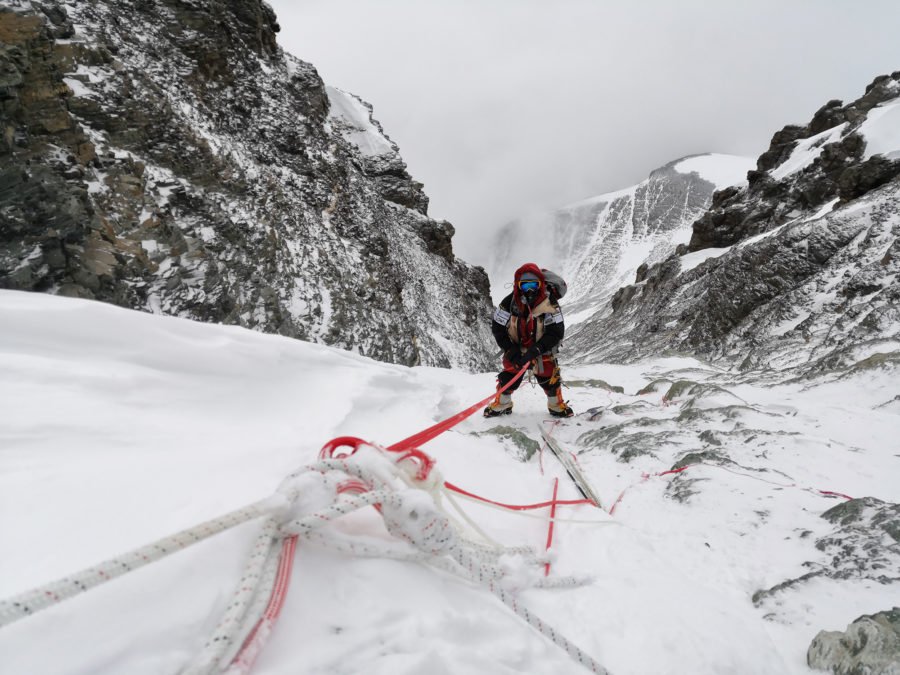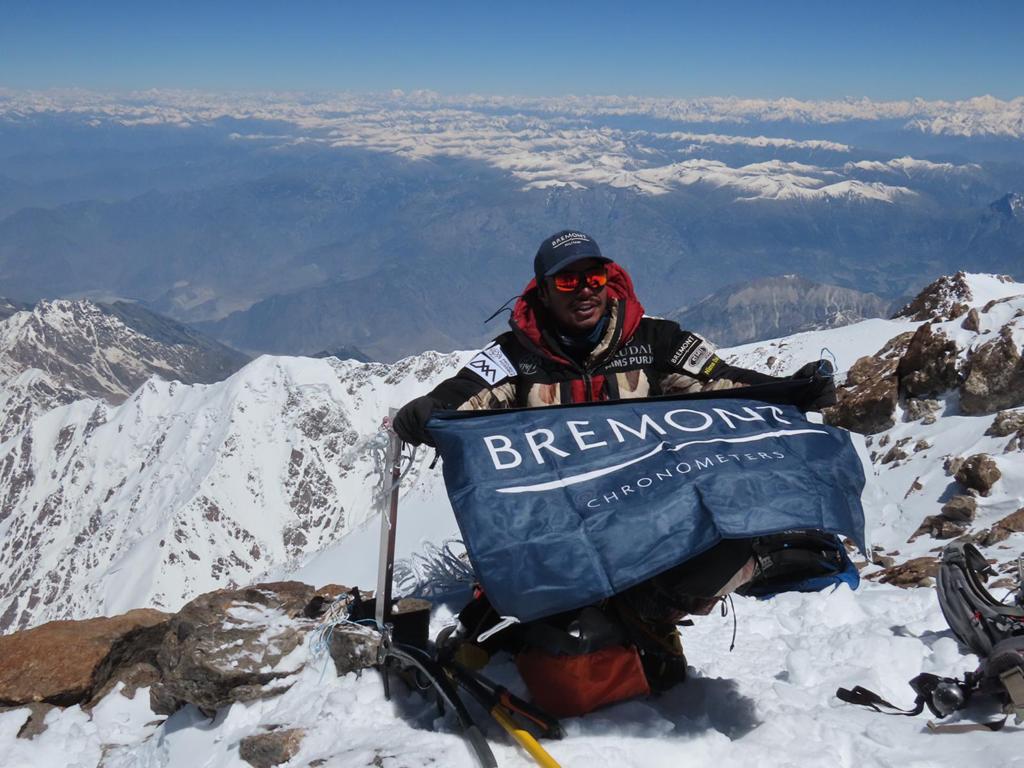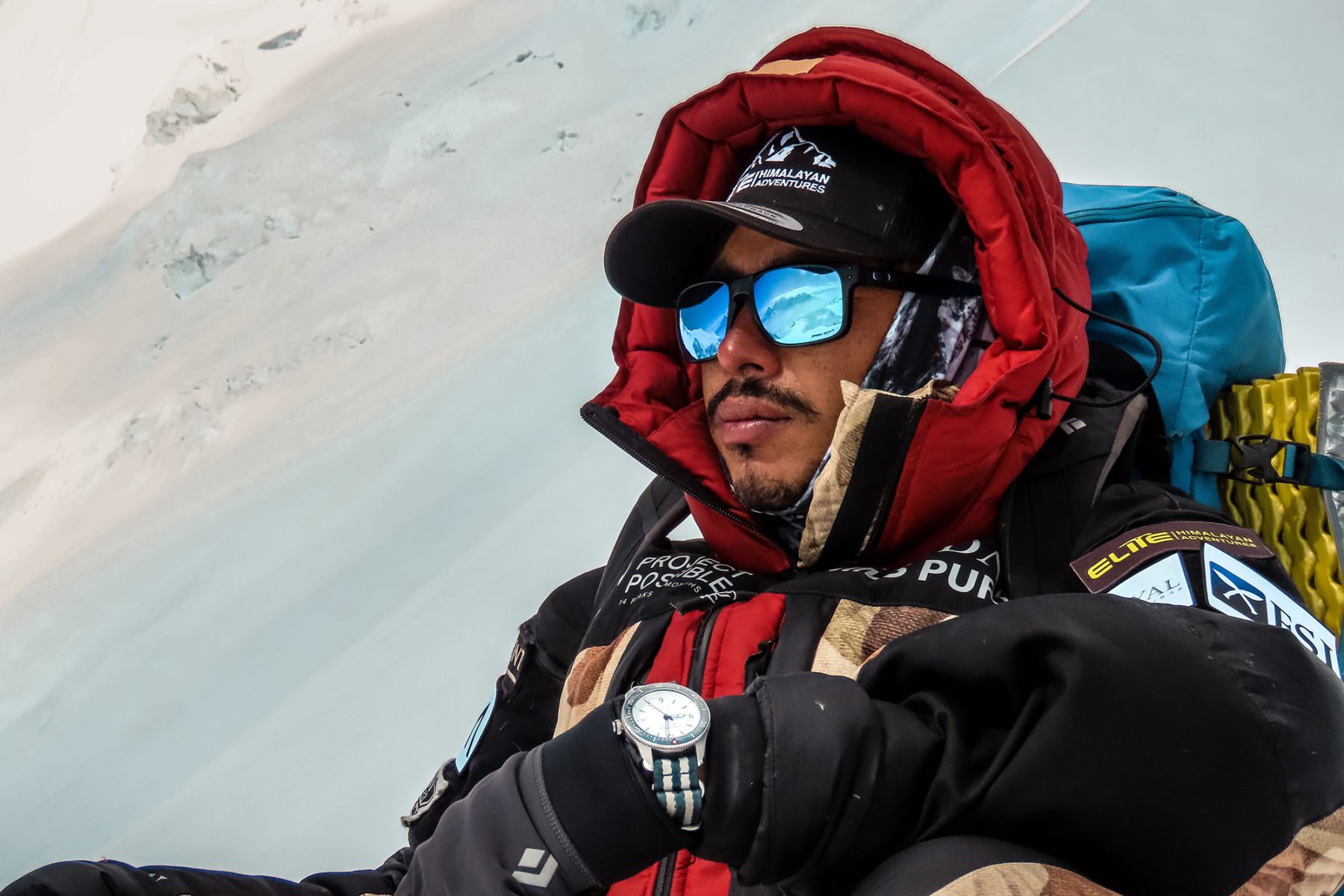Nirmal “Nims” Purja: Climbing earth’s 14 highest mountains in world-record time

The dream
Climbing big peaks is probably the world’s most demanding physical and mental challenge, and one that, for many alpinists, consumes their lives as they follow their dreams. For Nirmal “Nims” Purja, this dream began after his first big climb, where he realised that, although humans are strong, resilient and seemingly able to bend the natural world to our will, the mountains don’t always agree.
“What I realised was, specifically coming from a Special Forces background – a Ghurkha background – having served 10 years in the Special Boat Service (UK; he was the first Ghurka to make the rank, in 2009), you think you’re invincible,” he says. “However, when I went to the mountains it was pretty simple; the mountains made me feel so small and put things into perspective for me…”
The Bremont Project Possible was based around the challenge of summiting the world’s 14 highest mountains – all above 8000m, –in less than seven months. This was considered by most in the alpine climbing community as physically and mentally impossible, but in 2017 Nims (a Bremont-sponsored athlete) had other ideas – and confidence – thanks to his own personal experience from a recent world record climb (one of three he held at the time).
“…I managed to climb, Mount Everest, Lhotse and Makalu – the world’s fourth and fifth highest mountains – in five days,” he recalls. “At the end I was supposed to get picked up by helicopter, however due to the weather the helicopter never came, and I had to run from base camp – after summiting – directly all the way to Num.”

Num was eight days’ trekking away from where Nims had finished the climb, but he covered that distance in 18 hours, running (and climbing peaks) the whole way and, when finished, felt physically okay. The idea of Project Possible began…
All work, no train
Big mountain climbing incredibly tough (see here for our story on tackling a mountaineering class) and is an expensive business, so it was to this that Nims focused the next year and more, forgoing physical training simply due to the fact that fundraising took so much time. Sponsorship is hard to come by for relatively ‘unknown’ climbers – Nims was still serving with the SBS and many potential supporters had no idea he held three climbing world records. Instead, he drew on his considerable mental fortitude, something he was born with – and was further boosted with serving in the stressful environment of a Special Forces regiment – to keep himself focused on the end-game.
The fact that Nims had set himself a timeframe of seven months meant this planning, fundraising and logistics phase was far more complicated and also compressed, with it continuing even during the climbing phase.
“It was all next level,” Nims says. “Having no funding and having to raise the funds whilst climbing the mountain and having to deal with so many rescues, politics, etc., at the same time as climbing makes it even tougher.”
And the climbing itself was going to be tough enough…
The reality
There was no picking and choosing of ‘easier’ peaks before more challenging ones. Nims focused on the geographical locations of all the 8000m peaks, to minimise time in between ascents. Ironically, this meant the most challenging one, was first.
“Annapurna is the hardest one and that’s the one I started first,” he says. “For many [climbers] they would think it would be hugely demoralising. On Annapurna one in every three climbers die. That is the sad reality.”
Nims summited Annapurna on April 23, 2019. Nearby Dhaulagiri was next, on May 12, before Kanchenjunga and then Everest on May 22 (plus Lhotse on the same day). It was on the upper slopes of Everest that Nims took the now famous photo of a ‘traffic jam’ of climbers showing the world how overcrowded the world’s highest mountain had become.
Shishapangma, the last peak, was summited on October 29. It was an epic achievement; all of the world’s 8000m peaks had been climbed in six months and six days. Asked if he ever thought if Project Possible actually wasn’t, Nims replies with confidence.

“No, not really,” he says. “I never thought or doubted really that I would not be able to make it. On a mammoth project like this if there is a doubt and you’re doubting your ability – or not sure about what you’re doing – I don’t think you’d be able to do it.
“So, you climb one mountain, you come down, you’ll be tired ,and if you think you can’t do it when you’re so tired… if you’ve got any doubts it will divert you and your energy towards failure.”
The winter savage
So what do you do after setting an incredible climbing world record? You join a team of your fellow countrymen to claim one of the last great prizes in alpinism: a winter ascent of K2, – also referred to as “the savage mountain” – and the last of the 8000m peaks to be summited in winter. K2 is the world’s second-highest mountain but far more dangerous than Everest. There had been 46 previous attempts on a K2 winter summit, and it wasn’t until January 2021 that Nims and his fellow Nepalese climbers accepted that challenge – and succeeded.
“All 13 out of 14 8000m peaks were climbed by international friends,” he says. “There was nothing in the name of the Nepalese mountaineering community and that’s one of the reasons why I was there to make the impossible, possible.”
Future is bright
The Big Mountain Cleanup is Nims’ latest project. Run through the Nims Dai Foundation (www.nimsdai.com), Nims and fellow climbers intend to clean up as much deposited rubbish on the world’s big peaks as possible – and raise money via recycling.
““Bringing the Earth’s biodiversity back and making it more sustainable is not one man’s job,” he says. This is where we all have to unite we all have to work together.”
If anyone can make this a success, it’s the climber who summited all of the world’s 8000m peaks in just over six months.
Keeping time on the world’s highest peaks
Befitting the Bremont sponsored athlete, Nims wore a Bremont S300 White timepiece (from the Supermarine range) during Project Possible. Hand-built in the UK, the S300 White has a unidirectional bezel, a tough 40mm stainless steel case, an automatic BE-92AE chrono (including a Gludydur balance an Anachron balance spring) with 38-hour power reserve and is water-resistant to 300m.
Bremont has since released a commemorative Limited Edition Bremont Project Possible timepiece. Built using bronze (the first time Bremont has utilised this material) and titanium, the watch includes a dark blue dial combined with a bronze bezel (and hands) and blue ceramic insert. Turn it over and the open case shows a roto depicting the 14 peaks (and their heights), numbered in the order in which Nims climbed them. Impressively, the timepiece is water-resistant to 500 metres. The cool thing with the implementation of bronze in the build is it recognises the historical use of this metal in military instruments (think: exposed parts on naval boats to ensure corrosion-resistance, and also in compasses) and also relates nicely to Nims’ own time in the Special Boat Service and Gurkhas.

It’s one impressive – and seriously bombproof – timepiece that would be brilliant for keeping time on any adventure. Go to Bremont to see the entire range.


